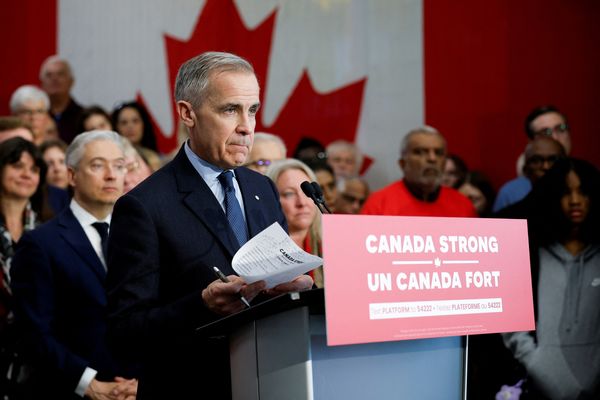
Global consumption has been rising rapidly in recent decades – and the UK and US are leading consumers
There are growing concerns over the potential harmful health effects of ultra-processed foods (UPFs).
- SEE MORE The diet that turned a UK teenager blind
- SEE MORE Which ultra-processed foods are linked to cancer?
- SEE MORE Is your diet killing you?
Global consumption of UPFs has been rising rapidly in recent decades, and the UK and US are leading consumers with UPFs exceeding 50% of daily calorie intake, according to a recent study by The Lancet. The journal said that evidence has been accumulating on the associations of higher UPF consumption and increased risks of adverse health outcomes.
In an article this week for The Guardian to promote his new book “Ultra-Processed People”, the celebrity doctor Chris van Tulleken writes: “The evidence shows that for many people, myself included, some UPFs are as addictive as cigarettes and other drugs of abuse.”
Why are UPFs suddenly everywhere?
UPFs themselves aren’t new, but there has been a recent spate of high-profile books warning about their risks. The term itself was coined by Carlos Monteiro, a professor of nutrition and public health at the University of São Paulo in Brazil. Nutritional advice had traditionally focused on ingredients: avoiding too much salt, sugar and fat, for example. But in 2009, Monteiro proposed instead classifying foods by the amount of processing they’ve undergone: in his view, it was the heavily processed ones, the UPFs, that posed the most significant health risks.
Researchers were sceptical at first, but a large number of scientific studies have shown a link between UPFs, obesity and associated illnesses. The exact mechanisms by which they affect us are still under debate, but bodies such as the World Health Organisation increasingly accept the concept, and the idea that they are harmful.
Why classify foods in this way?
Monteiro was puzzled by the fact that obesity and type 2 diabetes were on the rise, even though the figures his team had been compiling since the 1980s showed that Brazilians were buying less sugar, butter and oil. It emerged that they were actually consuming more sugar and fat thanks to the growing availability of highly processed, ready-to-eat or ready-to-heat products: packaged snacks, mechanically separated meats, breakfast cereals and so on.
Most food is processed in some way, from frozen peas to organic sun-dried tomatoes. But many UPFs scarcely resemble any food you’d find in nature. For instance, a Pringle is not a fried potato. It contains reformulated ingredients – dehydrated potato, hydrolysed proteins, hydrogenated oils – as well as emulsifiers and other items you would not find on a kitchen shelf.
Doesn’t that cover a lot of our food?
Monteiro’s system divides food up into four categories, from unprocessed to ultra-processed. Lightly processed foods, such as tomato purée and bacon, he considers largely unproblematic. UPFs he defined as “industrial formulations made entirely or mostly from substances extracted from food, derived from food constituents, or synthesised in laboratories”. These make up a large part of our diet, including shop-bought biscuits, ice cream, sweets, fizzy drinks, flavoured yoghurts, margarine, cereal bars, packaged bread, most baked goods, chicken nuggets, fish fingers, frozen pizzas, protein shakes and ready meals. They’re mostly “convenience foods”, cheap to manufacture, highly profitable and aggressively marketed.
Although there’s plenty of overlap between UPFs and junk food, many UPFs are actually marketed as healthy or environmentally friendly: vitamin-enriched cereals and vegan meat substitutes are often as processed as junk food. In countries with heavily industrialised food systems, such as the UK and US, the average person gets 60% of their calories from UPFs.
How do we know they’re bad for us?
Epidemiological studies (of large groups of people) in France, Spain, the US and elsewhere have shown a link between high consumption of UPFs and higher rates of obesity, heart disease, depression, stroke and cancer, among others. As far as possible, these studies have tried to adjust for the effects of poverty. “When you statistically adjust the results to account [for] socioeconomic factors, the size of the effect remains the same,” says Dr Chris van Tulleken, the author of “Ultra-Processed People”. The strongest evidence that causation rather than mere correlation is involved comes from a randomised clinical study conducted in Maryland in the US.
Kevin Hall, an American nutrition scientist, thought UPFs “a nonsense definition” when he came across the idea in 2016, and assumed the foods were being wrongly blamed for the poor diets and poor health outcomes of those living in poverty. In late 2018, he and his colleagues put the UPF theory to the test by giving 20 inpatient volunteers either unprocessed or ultra-processed diets. All the meals contained the same number of calories and the same quantities of salt, fat, sugar and fibre, and were designed to be equally “pleasant”; the subjects were told to eat as much or as little as they liked. The study ran for 28 days, with the two groups swapping diets after two weeks.
The results were dramatic: those on ultra-processed diets gained weight by an average of 1kg, having typically eaten 500 calories more each day. The study gave the idea of UPFs international credibility, and as such it has been scrutinised by critics, who haven’t, however, found any major flaws. In Hall’s view, “the mechanisms by which UPFs result in excess energy intake” are still in part unknown (though his study suggests that UPFs interfere with appetite hormones). “To figure it out we actually need to do the science, no matter how ‘obvious’ the answer seems to be.”
Why might UPFs have such effects?
In part, it’s for the obvious reasons: UPFs tend to have high levels of sugar, fat and salt. They are designed to be easily eaten, with high energy density and low fibre (reducing natural foods to their core constituents for industrial purposes – turning soya beans into hydrolysed vegetable protein, or corn into syrup, for example – removes fibre). But UPFs seem to have additional harmful effects too. There are a range of theories to explain this. For instance, it seems that artificial emulsifiers, chemicals that bond fat to water, promote bowel inflammation and change the make-up of gut bacteria. In addition, UPFs often use artificial flavourings, such as sweeteners and savoury-tasting additives, confusing the “satiety system”, the body’s way of signalling that you’re full – which explains the moreish, addictive quality of ultra-processed snacks.
Is everyone convinced by the case against UPFs?
No. Some complain that the definitions are inconsistent and often unhelpfully wide, demonising many perfectly healthy foods. Van Tulleken, for instance, has said: “If it’s wrapped in plastic and has at least one ingredient you wouldn’t find in a home kitchen, it’s UPF.” This would eliminate most brown bread, yoghurt and baked beans. All that this research really shows, some critics argue, is that humans, having evolved in conditions of scarcity, overeat the abundant, cheap, tasty food provided by modern science.
What can be done about UPFs?
As the authors of the Maryland study point out, “several attributes of ultra-processed foods make them difficult to replace: they are inexpensive, have long shelf-life, are relatively safe from the microbiological perspective, provide important nutrients, and are highly convenient”. So there are arguments for not stigmatising UPFs; and at present government dietary guidelines in the UK, as in much of the world, don’t even mention processing. Van Tulleken and others would like that to change and for UPFs to be labelled as such. In the meantime, it’s a good rule of thumb to minimise, where possible, foods whose ingredients sound like a science experiment. There’s evidence that cutting the proportion of UPFs in your diet, even just by eating some leafy vegetables on the side, greatly reduces the associated risks.







